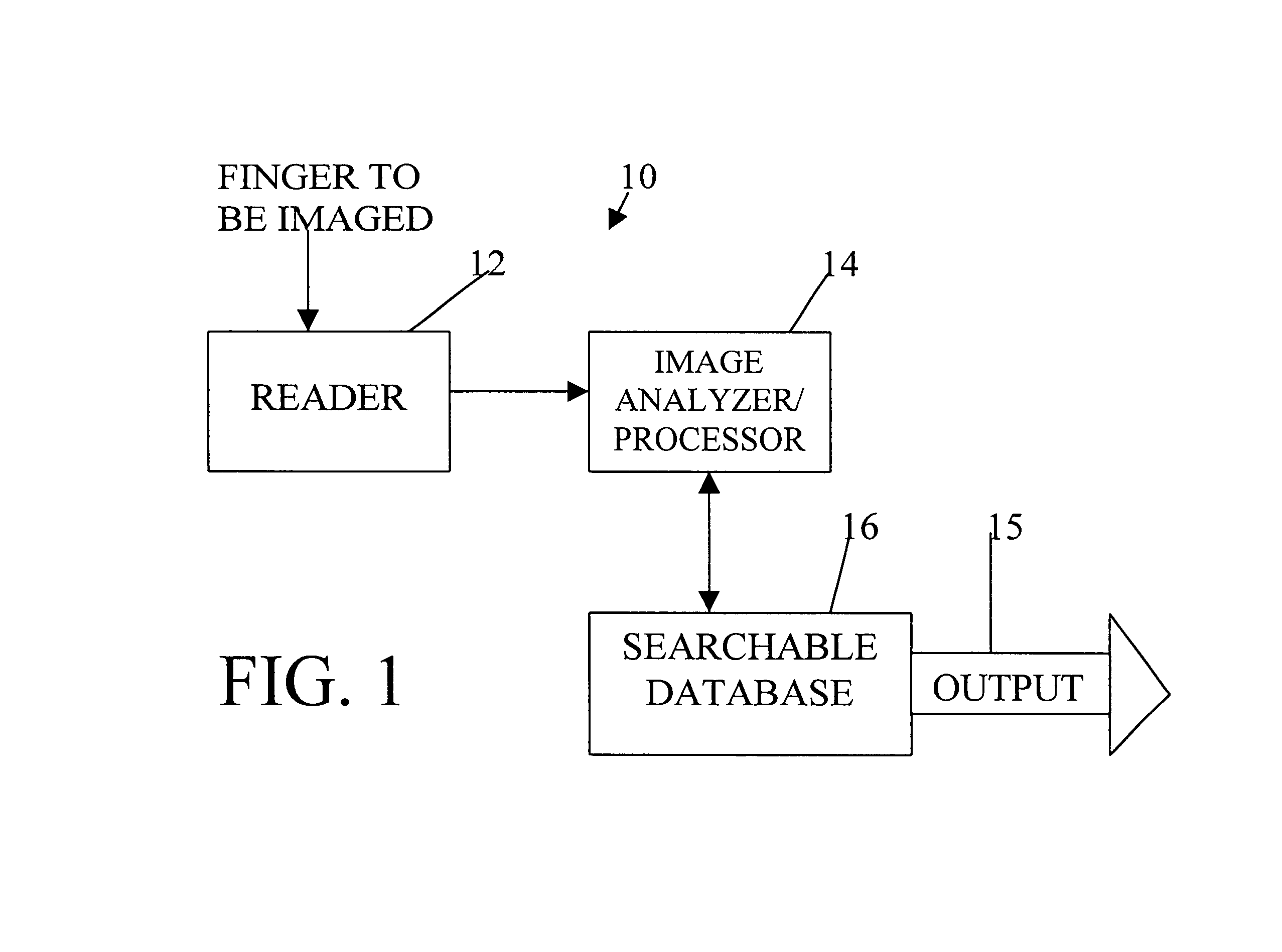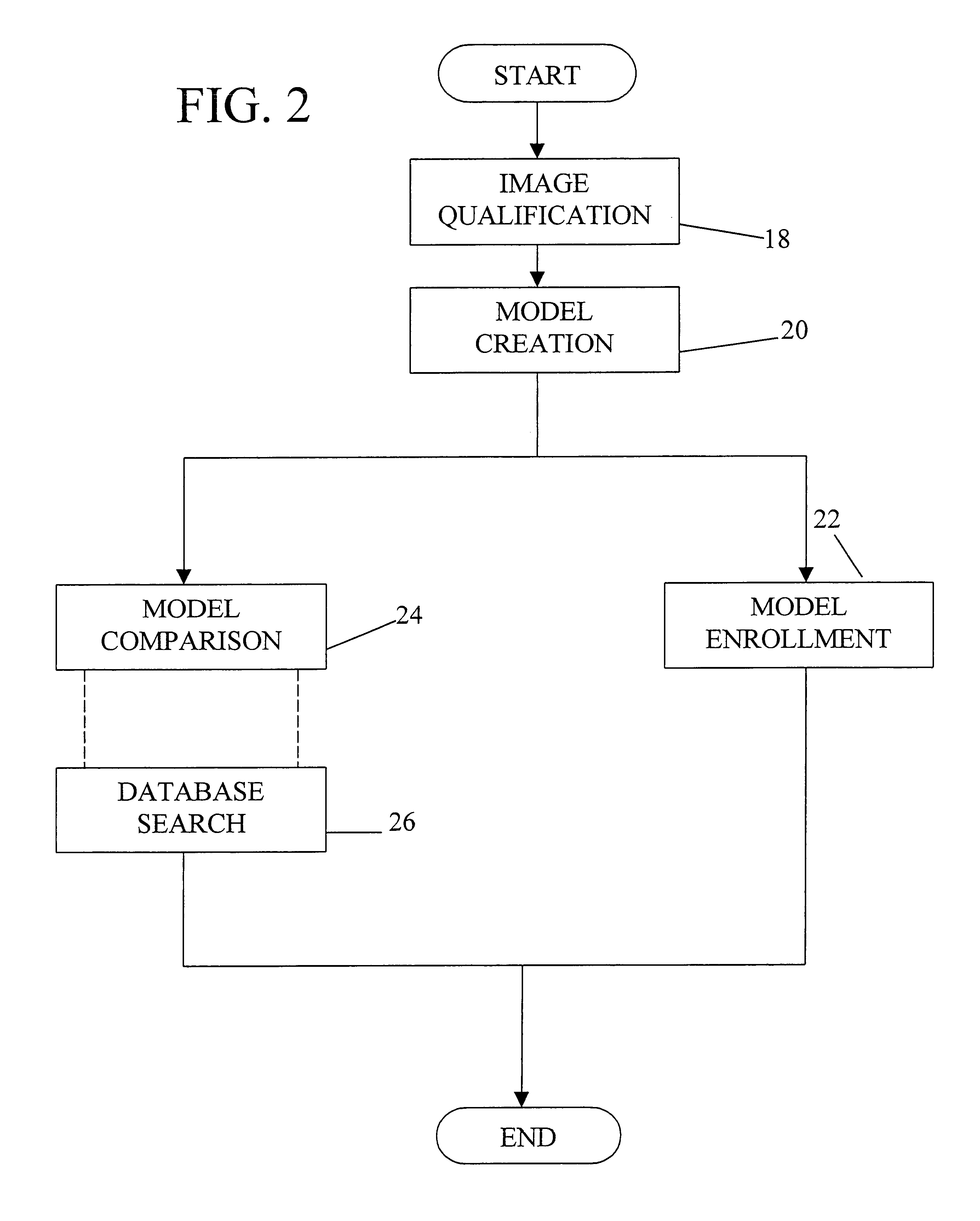Image identification system
a fingerprint image and identification system technology, applied in the field of image identification systems, can solve the problems of general non-repeatability of data from one, substantial incongruities from one image scan of fingerprint, and inability to develop practical security system applications that incorporate fingerprint image identification technology, etc., and achieve the effect of tuning the discrimination level
- Summary
- Abstract
- Description
- Claims
- Application Information
AI Technical Summary
Benefits of technology
Problems solved by technology
Method used
Image
Examples
Embodiment Construction
[0065]The present invention relates to methods and procedures for improving the performance and reliability of image identification systems generally. The inventive concepts could be applied within systems designed to operate in conjunction with a broad range of image types, including but not limited to license plate images, graphic images and text based images. In addition, the present invention provides methods and procedures that are particularly suitable for improving the performance and reliability of fingerprint image identification systems specifically. While the remainder of the detailed description will discuss the present invention in relation to fingerprint image identification systems, it is to be understood that the concepts of the present invention could just as easily be applied within other types of image identification systems.
[0066]FIG. 1 is a block diagram of a fingerprint imaging system 10 within which the methods and procedures of the present invention could be ...
PUM
 Login to View More
Login to View More Abstract
Description
Claims
Application Information
 Login to View More
Login to View More - R&D
- Intellectual Property
- Life Sciences
- Materials
- Tech Scout
- Unparalleled Data Quality
- Higher Quality Content
- 60% Fewer Hallucinations
Browse by: Latest US Patents, China's latest patents, Technical Efficacy Thesaurus, Application Domain, Technology Topic, Popular Technical Reports.
© 2025 PatSnap. All rights reserved.Legal|Privacy policy|Modern Slavery Act Transparency Statement|Sitemap|About US| Contact US: help@patsnap.com



